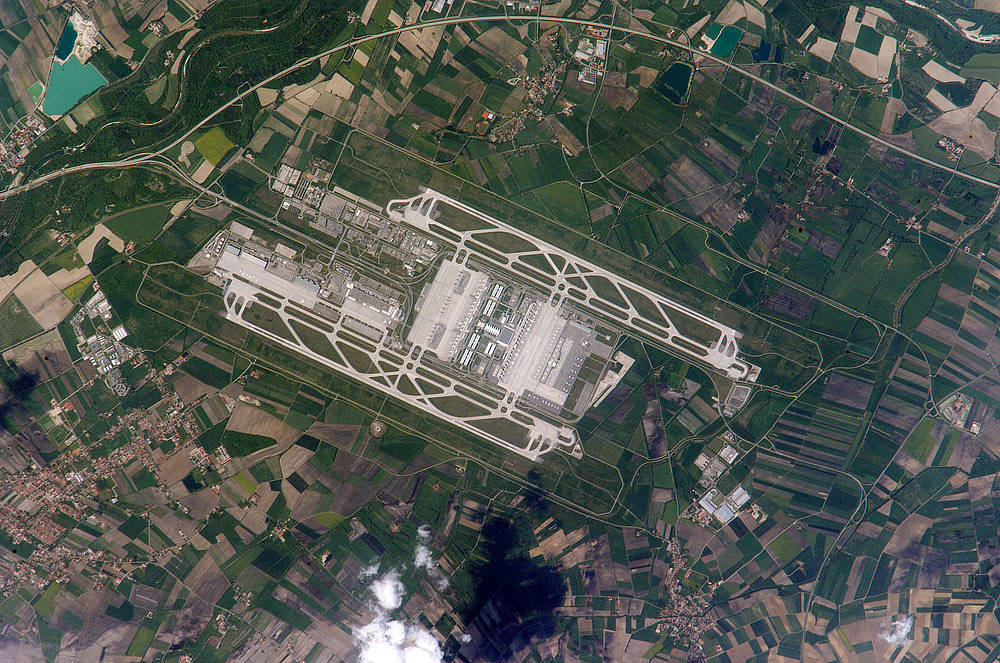The Franz Joseph Strauss, or Munich, International Airport served 29 million passengers in 2005, making it Germany’s second-busiest airport. The airport serves the Bayern (Bavaria) region of southeastern Germany, and is a hub for the Lufthansa airline. Like other large international airports, the facility occupies portions of multiple municipalities including Freising, Oberding, Hallbergmoos, and Marzling. During the construction of this airport, the village of Franzheim was demolished, and its 500 residents relocated.
The airport lies 31 kilometers, or about 19 miles, to the northeast of Munich. Rather than being an extension of the metropolis, the airport is surrounded by agricultural fields and small towns. The agricultural fields in active use appear in various shades of green, while the exposed soils of fallow fields appear brown to tan. Roadways around the airport appear as thin, intersecting lines. The white concrete airport runways are 4 kilometers, or about 2.5 miles, in length. At bottom center, the magnified shadows of clouds hang over the scene.
The airport grew in 2003 with the addition of Terminal 2, designed specifically to accommodate the needs of Lufthansa and its partner airlines. This photograph, taken from the International Space Station, was acquired May 12, 2006 and shows enough detail to distinguish individual airplanes on the terminal apron (inset; white rectangle marks location on main image), and the dark gray-blue rooftop of Terminal 2.Image credit: NASA/JPL/University of Arizona
2 min read




























